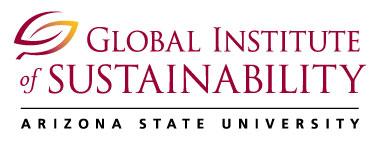
US and Canadian colleges and universities are taking leaps and bounds towards integrating sustainability into both classrooms and campus operations and management. While I've been impressed with many efforts, Arizona State University's new School for Sustainability, and the philosophy that underlies it, may represent the cutting edge. From the Christian Science Monitor:
...ASU has ratcheted up the effort with "a holistic approach" that is probably unique in the nation, says [Carter Roberts, president of the World Wildlife Fund in Washington].So, the AASHE conference apparently served as a lead-up to bigger things at ASU... that's great! At the center of all this development is a visionary president, Michael Crow. Since arriving in Phoenix in 2002, Crow has made sustainable transformation of ASU's campus and curriculum a priority:
Any new building erected at ASU - a school adding facilities quickly - must be built to exacting environmental standards. Some professors in the university's labs are concentrating on understanding nature and then using the knowledge to solve problems. For example, a team of professors is growing a strain of bacteria that feast on carbon dioxide. The bacteria could then be used to convert emissions from a power plant into bio-fuels.
By the fall, the university hopes to integrate its work so that students in other schools, such as the law school, can minor in sustainability. Some students will come from China as part of an agreement in August to launch a Joint Center on Urban Sustainability.
...Dr. Crow reorganized the life-science departments, and began hiring experts in sustainability. A central goal, he says, "is that we work in concert with the natural systems as opposed to in conflict with the natural systems."I could go on and on, but just read the article -- it's fascinating -- make sure to also read the interview with Dr. Crow. Underlying all of this is a concept for the university of the 21st century: a living laboratory where human interaction with the environment is always front and center. I'm really impressed, and am very interested to hear your responses.
And Crow goes a step further: He believes that nature, through 4 billion years of genetic change, provides "the pathway to everything we need. Nature has adapted to all kinds of problems: hot climate, cold climate, high carbon dioxide, low carbon dioxide."
In May 2004, Crow organized a three-day retreat in the Yucatan, with leading experts from around the world, to brainstorm what an institute of sustainability would have to do to succeed. "We asked them, 'If you could design an entire university to attack sustainability issues, what would you do?' " recalls Crow. "What they said is that 'You can do this, and we need you to,' and they urged us to move forward."
At the meeting was [Julie Ann Wrigley], who later wrote the university a check for $15 million as a planning grant.
Crow subsequently allocated the university's resources. He committed to dozens of new faculty positions, four distinguished chairs, and a new building that would meet exacting environmental standards. Included in the mix: a $6 million "Decision Theater" that allows community leaders to see the complexities of their decisions on the environment - not just now, but also in a virtual future.
Via linton at Hugg.
Categories: university, arizona, sustainability, school, phoenix, innovation, education